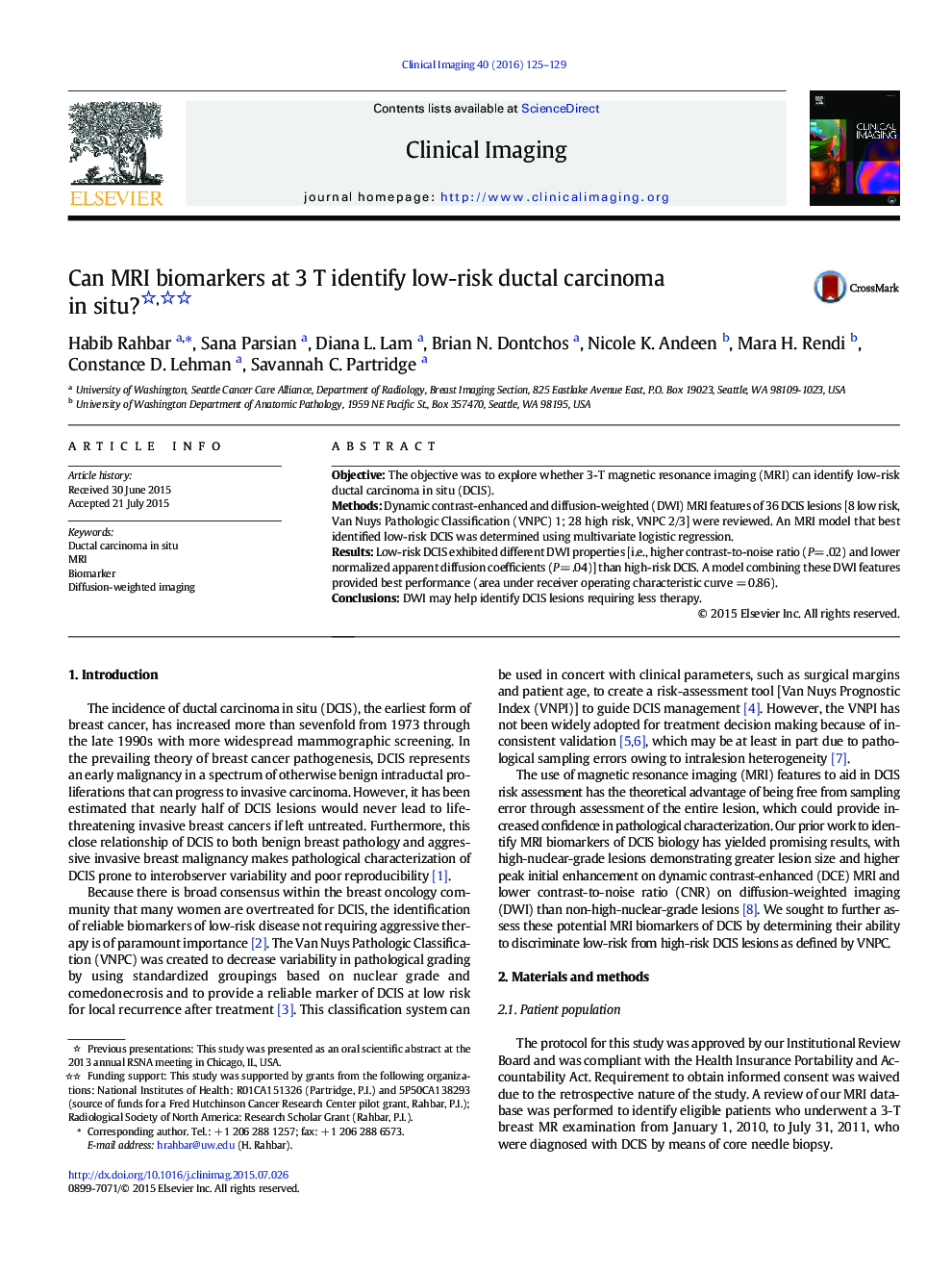| Article ID | Journal | Published Year | Pages | File Type |
|---|---|---|---|---|
| 4221333 | Clinical Imaging | 2016 | 5 Pages |
ObjectiveThe objective was to explore whether 3-T magnetic resonance imaging (MRI) can identify low-risk ductal carcinoma in situ (DCIS).MethodsDynamic contrast-enhanced and diffusion-weighted (DWI) MRI features of 36 DCIS lesions [8 low risk, Van Nuys Pathologic Classification (VNPC) 1; 28 high risk, VNPC 2/3] were reviewed. An MRI model that best identified low-risk DCIS was determined using multivariate logistic regression.ResultsLow-risk DCIS exhibited different DWI properties [i.e., higher contrast-to-noise ratio (P= .02) and lower normalized apparent diffusion coefficients (P= .04)] than high-risk DCIS. A model combining these DWI features provided best performance (area under receiver operating characteristic curve = 0.86).ConclusionsDWI may help identify DCIS lesions requiring less therapy.
